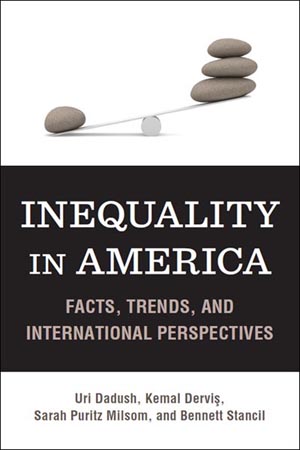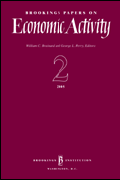Studies in this week’s Hutchins Roundup find that the expansion of disability benefits for veterans in the early 2000s lowered their labor force participation, children in families who move to better neighborhoods have better outcomes, and more.
Want to receive the Hutchins Roundup as an email? Sign up here to get it in your inbox every Thursday.
Expansion of disability benefits for veterans reduced their labor force participation
In 2001, the Department of Veterans Affairs lowered the eligibility requirements for the Disability Compensation program for Vietnam-War veterans who served with “boots on the ground” but not for other veterans. Courtney Coile of Wellesley and Mark Duggan and Audrey Guo of Stanford find that this change reduced the affected veterans’ labor force participation in the 2010-2015 period by 2.5 percentage points. They also find that the change raised the probability that boots-on-the-ground veterans were self-employed by 4.1 percentage points and reduced the probability of working for others by 6.5 percentage points.
Moving to a better neighborhood improves child outcomes
Using data for 1996-2012, Raj Chetty of Stanford and Nathaniel Hendren of Harvard conclude that the neighborhoods in which children grow up have a large effect on their futures. In particular, when a family moves to a better neighborhood, as measured by the outcomes of children already living there, each year spent in the better neighborhood brings a child’s future earnings 4 percent closer to the earnings of the neighborhood’s permanent residents; this effect persists into adulthood. Other outcomes, such as rates of college attendance, teenage employment, teenage births, and marriage, are also improved by moving to better neighborhoods, they find.
Monetary expansions reduce income inequality whereas certain monetary contractions increase it
With data from 32 advanced and emerging market countries over 1990-2013, Davide Furceri, Prakash Loungani, and Aleksandra Zdzienicka of the IMF find that an unexpected increase of one percent in the policy rate raises inequality – as measured by the Gini index – by about 1.25 percent in the short term and 2.25 percent in the medium term, while a one percent reduction in the policy rate decreases inequality by the same magnitude. The precise size of this effect varies with country characteristics, such as the scope of redistribution policies. However, when an increase in the policy rate is associated with high growth, it leads to a decline in inequality.
Chart of the week: Education doesn’t translate into wealth at the same rate for all racial and ethnic groups
Quote of the week:“As an economic principle, the existence of the debt limit is hard to defend; it is a purely political construct,” says Treasury Secretary Jacob Lew.
“Increasing the debt limit does not authorize or create additional spending, and long before any debt limit impasse, legislators have already made the budgetary decisions that direct federal spending and revenue, and hence the trajectory of the national debt… [T]here is only a downside to the idea of a debt limit. While it is important for the government to manage its finances such that its debt-to-GDP ratio is sustainable, decisions on how much to borrow should be made when spending and revenue laws are enacted, not when bills are waiting to be paid… However Congress chooses to exercise its Constitutional role with regard to our nation’s debts, whether to abandon the debt limit entirely or to adopt a new course that addresses the current risks, one thing is clear: the current debt limit regime has outlived its usefulness.“








Commentary
Hutchins Roundup: Veterans’ disability benefits, neighborhood effects, and more
Thursday, January 5, 2017